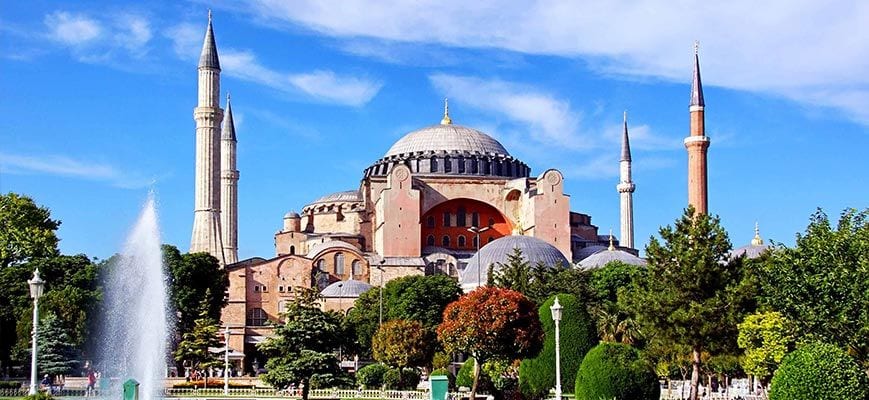No products in the cart.
Information
Santa Sofia Will Be an Important Scene of Dan Brown’s ‘Inferno’
A great conspiracy, structured from the passages of the Hell of Dante Alighieri, once again enlists the historian and iconographer of Harvard Robert Langdon in a series of investigations and persecutions that will take him to the city of Istanbul, where the plot of the Dan Brown’s latest novel will reach its final outcome.
In this new saga, Robert Langdon (protagonist of the previous Dan Brown novels such as Angels and Demons, The Da Vinci Code and The Lost Symbol) must solve a mysterious plot that hides a powerful virus destined to infertilize humanity.
On page 334 of “Inferno”, after reaching several conclusions, Langdon reveals to Sienna, a brilliant British scientist who accompanies him: we are in the wrong country !, so they decide to leave Italy to travel to Turkey, where all the tracks lead you to the famous Church of Saint Sophia. There it is revealed to us that “the traditions of the East and the West may not be as divergent as we imagine.”
“You will not believe what we have discovered. Have you ever heard of documentary director Göksel Gülensoy? Langdon shook his head”. In this passage, reference is made to a Turkish filmmaker and researcher linked to a real diving project under the Basilica of St. Sophia and which has revealed several interesting discoveries in recent years.
“I think that what is below Hagia Sophia is much more exciting than what is on the surface”, Brown quotes in his novel Gülensoy himself, who has been surprised and very excited about this reference of the famous writer of American best sellers .
With these new mysteries of Santa Sofia in Brown’s Inferno, the number of visitors is expected to increase to the already well-known architectural gem of Istanbul, which last year only received 3.2 million visitors.
But although Santa Sofia plays a leading role in the novel, another incredible tourist site of ancient Constantinople will host its true outcome: The Basilica Cistern, a colossal underground chamber that was used to store water in the time of ancient Byzantium and then of this novel will also increase, without doubt, the number of visits.
In December 2009 Dan Brown traveled to Istanbul, where he frequented the whole area of Sultanahmet, the most touristic in the city and the oldest on the European side and where he finally found the inspiration and the mystery to plot the plot of his Inferno, a book that although it has just been launched, simultaneously in several languages, it is already estimated as one of the best best sellers of 2013.
Museum of the Basilica of St. Sophia The basilica, Ayasofya Camii Müzesi. Hagia Sophia or “Hagia Sophia – Divine Wisdom” is undoubtedly the most splendid testimony of Byzantine art. It was built on other earlier churches and its construction began in the year 532 by order of the Emperor Justinian, ending in 537. The building was designed by the architects Antemio de Tralles and Isidoro de Mileto, according to the Paleo-Christian model of construction, with a of Greek cross. From the architectural point of view, the great dome that crowns the entire building is the most interesting. A large central vault, 55m high and 32m in diameter, rests on four pendentives that in turn distribute the weight on four pillars.
Other lateral domes, together with thick buttresses, counteract the tension and the enormous weight of the whole. The interior of the temple, spacious, spacious and light, was designed to host the most important ceremonies of the emperor. The interior walls, as well as the arches and the archivolts, were once covered with marvelous golden mosaics that, upon receiving the impact of the light, produced a supernatural environment. Today, most have been lost and the walls are covered with paintings and Arabic calligraphies of the 19th century. made by the Turks. The basilica has been restored several times, the first was in the year 562, as the earthquake of 558 damaged the great central dome. The different restorations have not altered the beauty of the original construction. Hagia Sophia was initially a Christian cathedral, then a mosque for five centuries and, finally, in 1935 it was transformed into a museum by Atatürk


